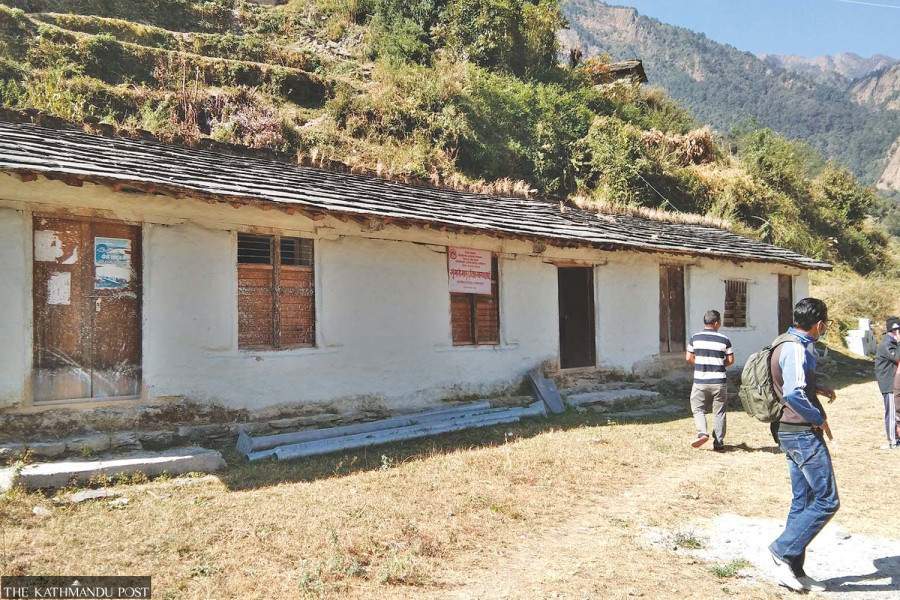National
Baglung villages achieve zero home delivery milestone
Investments in health facilities and staff lead to improvements in rural lives.
Prakash Baral
Seven years ago, Tika Chhantyal of Tamankhola Rural Municipality-6 had delivered her baby at home. With the closest health institution at Burtibang, a day’s walk away from Tamakhola, maternity services were out of reach.
Following her delivery, Chhantyal experienced various complications, like constant stomach ache and excessive bleeding. One of her neighbours, who had also gone through the same procedure, died a few days after delivering the child.
The lack of maternity services in the area cost many women their lives while the survivors continue to suffer from health complications.
But in the past three years, the home delivery rate in Tamakhola has dropped to nil, making the rural municipality a “no home delivery” ward, said Garima Harmel, head of the Khukhani health post.
The year before the establishment of a birthing centre in Khukhani in 2020-21, 17 women had delivered their babies at home. Three others had travelled to the district headquarters seeking medical assistance.
Now, more than 30 deliveries are performed annually at the Khulkhani-based institution alone.
Since the centre came into operation, the number of home births dropped to zero, with every other delivery being performed at the medical institution; of which 21 were conducted in its first year of establishment.
Harmel also assisted in home deliveries before maternity services came into operation at the health post.
“We used to do three types of reporting—women who delivered alone at home, home deliveries assisted by health workers and deliveries done at health institutes—which is not needed anymore,” Harmel said.
“After recording zero home deliveries for three consecutive fiscal years, Khukhani was declared a ward with ‘healthy mother and child’ on Monday.”
The maternal mortality rate has also dropped to zero, she says.
“Almost all expectant mothers come for regular health check-ups these days. Even if they don’t, we have door-to-door programmes for the same,” Harmel added.
According to the rural municipality’s health department head, Til Bahadur Chhantyal, the health condition in the community has greatly improved in recent years.
As per available reports, 47 home deliveries were performed in 2015-16 and 36 the following year. The number decreased every successive year, with only one home delivery performed in the current fiscal year.
This year, only one woman in ward 3 delivered a baby at home, but she was also medically assisted, he said. None of the other wards has recorded home deliveries in the past three years.
After the 2017 elections, the local government prioritised bettering citizens’ health and bringing the number of home deliveries to zero.
Achieving the initiative became possible only after various non-government organisations supported the campaign.
The Fairmed Foundation’s rural health improvement initiative and the rural municipality’s campaign were held simultaneously, pushing the local body’s agenda forward.
The foundation’s initiative regularly provided the required equipment and training, expediting the campaign and helping realise the goal sooner than expected, health workers and local representatives say.
With adequate equipment, a primary hospital was built in Bongadobhan in ward 1 of the rural municipality. Currently, the medical institution manages 10 beds and operates 24/7.
Birthing centres have been established in the primary health units in wards 3 and 5 of the rural municipality. The foundation has also provided delivery beds, baby warmers, delivery sets and delivery rooms.
The local body has also increased its investment and built two community health centres in Lamela of ward-4 and Thaspuri of ward-5. Health counselling centres have also been established in wards 1, 2 and 6, with each institution being provided with the necessary equipment.
A total of 135 institutional deliveries have been performed annually in the past three years. Besides the regular health workers, each birthing centre in the rural municipality has a midwife and two assistants.
The local unit has appointed 30 health workers and has invested Rs10 million for the management of workforce in the local health units, said local government chief Jok Lal Budha.




 7.15°C Kathmandu
7.15°C Kathmandu.jpg)










%20(1).jpg&w=300&height=200)



